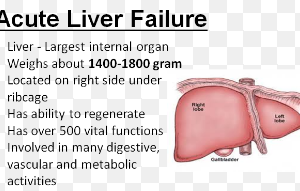
At some point obesity has to be unhealthy despite claims by plus-size people that they are healthy.
At what weight, then, does obesity go from being potentially healthy to always harmful?
When very overweight people claim that people can be fat and healthy at the same time, do they actually believe this is true for women and men who weigh over 400 pounds?
Cutoff Weight Between Healthy Obesity and Dangerously Overweight
“This is an off-shoot of the ‘fit but fat’ thinking,” begins Susan L. Besser, MD, with Mercy Medical Center, Baltimore; Diplomate, American Board of Obesity Medicine and board certified by the American Board of Family Medicine.
“I think staying fit is great!” continues Dr. Besser, referring to obese men and women who engage in structured exercise such as a step aerobics class and strength training.
“No matter how much you weigh, if you are fit, you will be healthier.”
This is relative to what kind of state a heavy body would be in if the individual did NOT exercise.
In short, structured workouts will benefit ANY body.
“That said, being overweight, even if you feel healthy, does have some risks associated with it,” continues Dr. Besser.
“The biggest problem isn’t the superficial fat (what you see), but what is called visceral fat. That is fat inside your body.
“Fat accumulates everywhere — in your organs as well as under the skin. The fat that is inside organs over time can cause health issues.
“For example, fat around your heart can increase your risk of heart disease and heart arrhythmias.
“Fat in your liver can cause a problem called NASH (non-alcoholic fatty liver disease).
“In this case, the fatty tissue disrupts the normal function of the liver which can cause liver problems.
“These are only two examples of potential long-term health issues from being chronically overweight (even if you feel healthy).
“So, what is a weight cut-off? We use BMI as an estimator of normal weight (and there are charts everywhere to measure your own).
“Realize, however, this is just an estimate (but very easy to do). This method doesn’t take into account the amount of muscle vs fat.
“So for example, a weightlifter might appear to be obese [via the body mass index number] even if he actually has a very low percentage of fat in his body just because this method merely calculates height and weight.

“For more sensitive testing, one can do a Dexa (an X-ray test) or bioelectrical impedance testing (using electrical voltage) or displacement testing (‘bod pod’).
“These alternative methods may be more sensitive but aren’t as generally available.”
If you belong to a gym, ask a personal trainer to give you a body fat percentage reading using skin-fold calipers.
Dr. Besser adds, “Most of us, in reality, actually have a good idea of whether or not we are overweight and know if we need to work on it.
“Always remember, obesity is a chronic issue — and a lifelong one — so get into good eating and exercise habits and keep it up!”
No One Number Is the Weight Cutoff Point. However…
The question of what is the cutoff point where weight is necessarily dangerous in any obese person can be viewed as snarky — or … as quite serious.
If we take a 5’5” woman, is the cutoff 300 pounds, after which anything over will threaten her health?
Is it 347? 413? 500? Is a 500 pound woman healthy simply because her blood sugar is normal, EKG is normal, blood pressure is normal and she doesn’t have cancer or liver disease?
Current status isn’t the be-all end-all. What about down the road? We can use smoking as an example. A smoker may be free of disease NOW.
But he’s at grave risk for heart disease and cancer in the future. Even if he doesn’t develop these illnesses, as Father Time marches on, his stamina will become severely compromised.
The cutoff point after which any more weight that’s gained makes a fat man, or woman, unhealthy has not been studied — simply because there are variables:
- Height
- Body composition
- Age
But it’s an interesting point to reflect upon among those who believe that obese people can be healthy. Let’s reword this: Fat people can be free of disease or mobility problems at the moment.
 Dr. Besser provides comprehensive family care, treating common and acute primary conditions like diabetes and hypertension. Her ongoing approach allows her the opportunity to provide accurate and critical diagnoses of more complex conditions and disorders.
Dr. Besser provides comprehensive family care, treating common and acute primary conditions like diabetes and hypertension. Her ongoing approach allows her the opportunity to provide accurate and critical diagnoses of more complex conditions and disorders.
 Lorra Garrick is a former personal trainer certified through the American Council on Exercise. At Bally Total Fitness she trained women and men of all ages for fat loss, muscle building, fitness and improved health.
Lorra Garrick is a former personal trainer certified through the American Council on Exercise. At Bally Total Fitness she trained women and men of all ages for fat loss, muscle building, fitness and improved health.
.









































